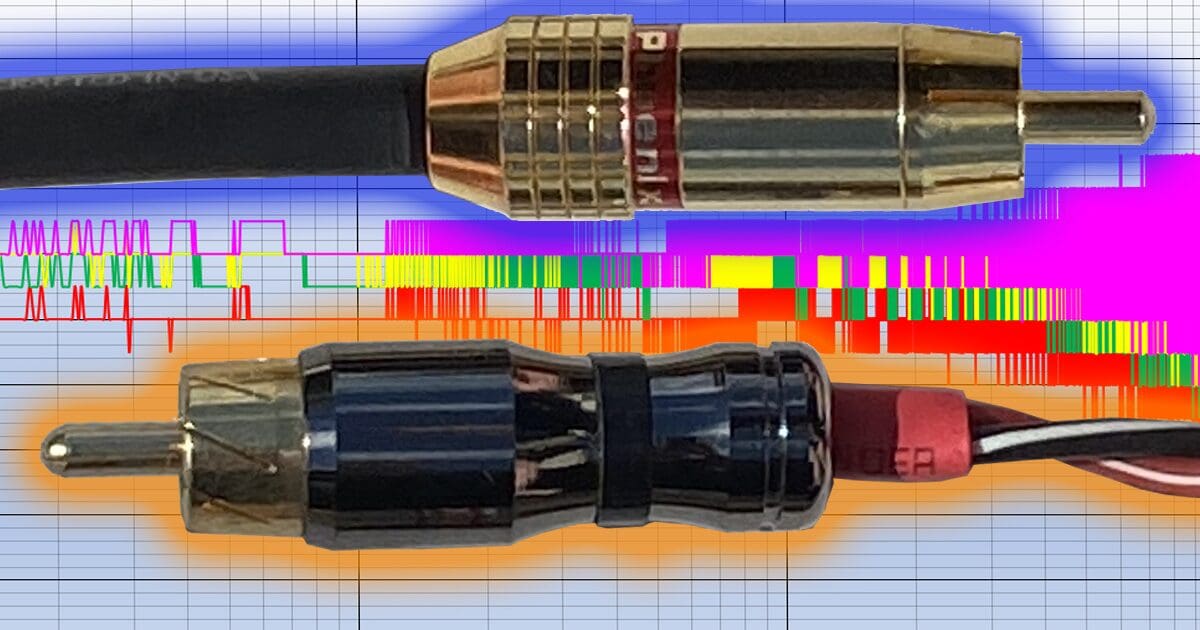In the fall of 2021, we took some detailed measurements to quantify the frequency response characteristics of several different RCA cables. These varied from solutions as simple as a pair of 18-AWG wires that were twisted together, to premium coaxial conductors and twisted-pair cables with extensive shielding. The results, as presented, showed negligible variations in response among the cables.
People Will Argue About RCA Cables
One of our goals at BestCarAudio.com is to share articles that help dispel myths and confusion around seemingly complicated topics. That was the purpose of the original interconnect comparison. With that said, I’ve participated in several blind tests of multiple cable designs, and I can, without a shadow of a doubt, hear a difference under controlled conditions. Let’s take another look at what’s happening from a different perspective.
When I did the first test, my goal was to quantify the frequency response characteristics of each cable. The graphs I produced had a top-to-bottom resolution of only 1 decibel. The variations were less than 0.04 across the entire audio range. To make each cable’s response as easy as possible to see on the graph, I included an offset in my spreadsheet that would make all of them equal at 1 kHz. I had the epiphany to look at the raw data the other day to see if there was a difference in the overall response without this offset. There is.
Short RCA Interconnect Cable Comparison
Let’s look at the data for short interconnect cables again. I’ve zoomed in on the frequency response graph by adjusting the upper limit to 0.1 dB instead of 0.5, as was used in the previous article. I’ve also removed the offset.
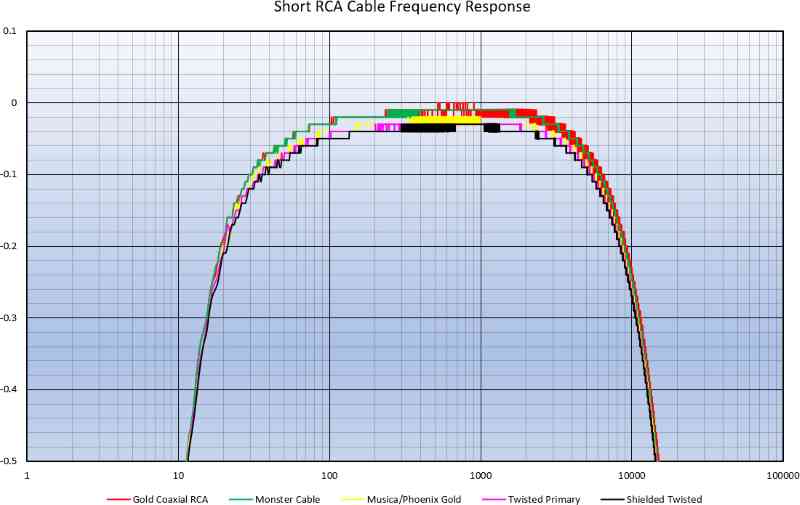
You can see that the inexpensive Phoenix Gold interconnect sends more signal to the amp than any of the other cables. Just how much more, you ask? I created a second graph to show the differences between the cables. As there is no reference, per se, I subtracted the second, third, fourth and fifth traces from the first. The traces show the difference in measured frequency response. The 0.01 dB resolution makes it a little hard to see, especially at high frequencies, but you get a general idea. Through the bass and midrange frequencies, everything remains fairly consistent. At higher frequencies, things do separate. Depending on the cable-to-cable comparison, I saw as much as a 0.06 dB increase and a -0.1 dB decrease.
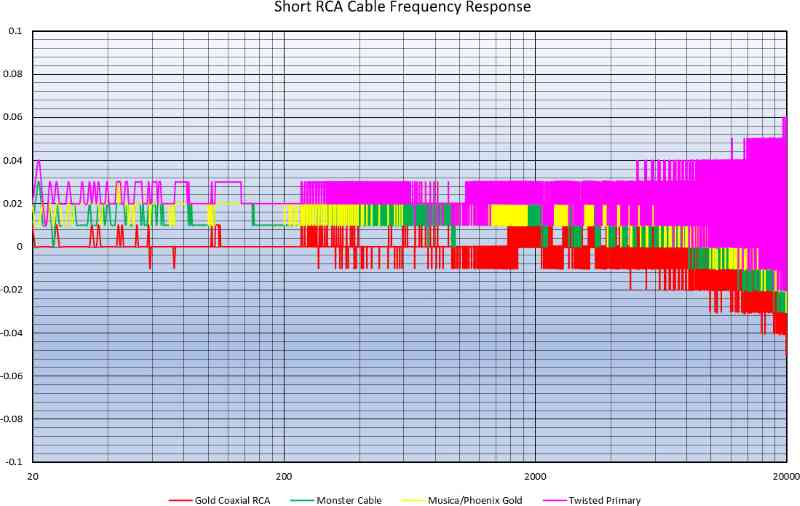
Long RCA Interconnect Cable Comparison
Let’s repeat the analysis for the 16-foot interconnects to see if they tell the same tale. Here’s the revised frequency response graph with the offset data removed and the top of the chart decreased to 0.02 dB to show more resolution.
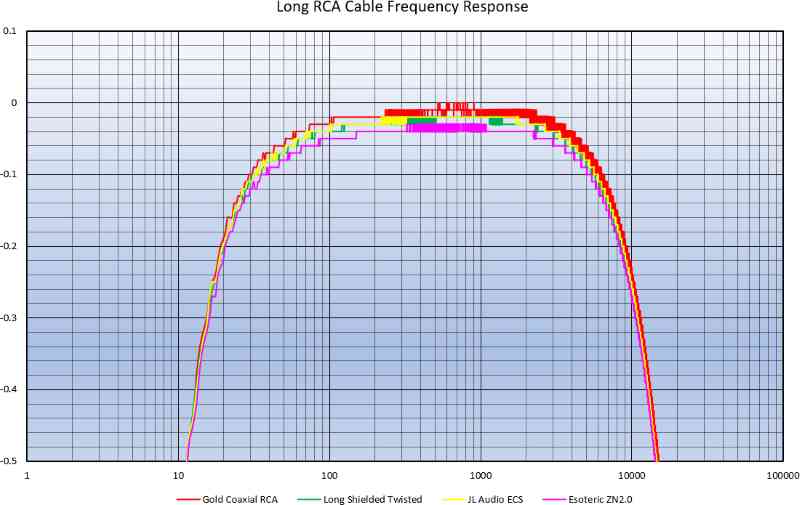
Now, let’s compare the three cables to the long inexpensive Phoenix Gold. For clarity, I’m using these as the reference only because they were the first data set I loaded into the spreadsheet – no other reason.
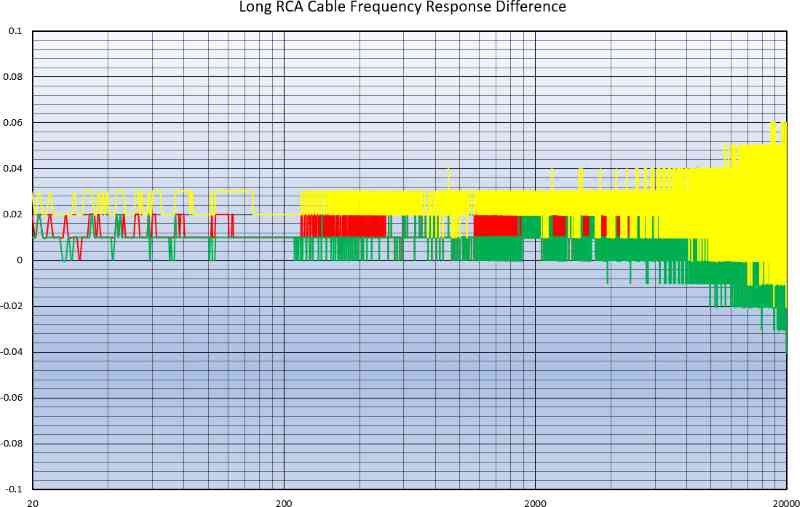
The difference varies from +0.06 to -0.13 dB among the four designs, with most of the difference at higher frequencies in the long cables.
Your Car Isn’t a Home Audio System
Whenever I’ve participated in controlled comparisons of interconnect cables, I had someone else swap the cables and restart the test tracks. I didn’t leave my seat. The differences were never dramatic, and the data presented here confirm that.
What’s more important, the variations between what might be perceived as the cable with the flattest response and that with the largest deviation are smaller than the difference in what you’d hear by moving your head an inch or two in one direction or the other. Likewise, if your audio system has a good quality digital signal processor in it, and it should, all of this is moot. A few taps on a laptop’s keyboard would more than make up for even the most dramatic of differences between cables.
When shopping for RCA interconnect cables for your car audio system, you should be focusing on technologies that will keep noise out of the system. Ground shielding that covers the signal conductors from the RCA plug on one end right through to the other is the most important factor. In addition, your technician can tune microscopic response deviations out of the system during calibration. Drop by your local specialty mobile enhancement retailer today and ask about the interconnects they have available.
